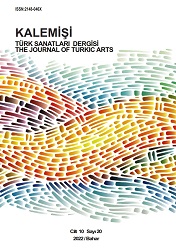İSTANBUL KAPALIÇARŞI’NIN MİMARİ ÖZELLİKLERİ VE KULLANIM ÖNERİLERİ
ARCHITECTURAL FEATURES OF ISTANBUL GRAND BAZAAR AND SUGGESTIONS FOR USE
Author(s): Meltem ÖzçakıSubject(s): Architecture, Tourism, Socio-Economic Research, History of Art
Published by: Sanat ve Dil Araştırmaları Enstitüsü
Keywords: Istanbul Historical Peninsula; Grand Bazaar; architectural design; use;
Summary/Abstract: Istanbul Grand Bazaar has been formed through a timespan of hundreds of years, and consists of a variety of structure types such as bedestens, shopping streets, and khans. The aim of this paper is to investigate the composition, spatial uses, and architectural design criteria of these structures, and to propose suggestions for their uses. Within the context of the paper, information on the architectural features of the bedestens, shopping streets, and khans which constitute the Grand Bazaar is given, and their use in daily life is highlighted. The study also includes issues about the use of the Grand Bazaar along with experts’ views to fix these. Through a SWOT Analysis, the strengths, weaknesses, opportunities, and threats that concern the structure are shown in a table. In the light of these, suggestions to improve the use of the Grand Bazaar are discussed. The suggestions point out to the fact that the architectural criteria of the structure should be more visible, and these should be used as new designs. These include that the Grand Bazaar should maintain its relations that are integrated with its environment; arrangements that reflect the traditional architectural features should be made; and old production techniques should be revived in order to establish a closer connection with the historical texture. Paying attention to the transformative effect of tourism enhances the possibility of use that allows people to spend more time in the historical environment. Improving the use of the Grand Bazaar, creating new alternatives, and including arrangements that maintain the traditional texture will raise the quality of the urban space. Conducting studies about historical environments provides the analysis of architectural design criteria, allows for the creation of memory of structures, makes issues visible, and mediates to create a variety of alternatives when studies of structures are made (such as refunctioning).
Journal: Kalemişi - Türk Sanatları Dergisi
- Issue Year: 10/2022
- Issue No: 20
- Page Range: 33-49
- Page Count: 17
- Language: Turkish

